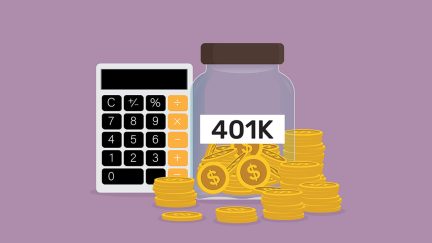Get more! Sign up for PLANSPONSOR newsletters.
Many Have Not Started Saving for Retirement
Franklin Templeton Investments released the findings of its 2014 Retirement Income Strategies and Expectations (RISE) Survey, which reveals 39% of preretirees have not yet started saving for retirement. The annual survey also shows 92% of preretirees anticipate their retirement expenses will be similar to or less than their preretirement spending.
“Americans have long struggled with preparing for the realities of retirement,” says Michael Doshier, vice president of retirement marketing for Franklin Templeton Investments, based in San Mateo, California. “The survey uncovered several contradictions related to the degree of understanding and often divergent approaches to retirement.”
On the one hand, 72% of preretirees are looking forward to retirement. However, only 25% think their retirement will be better than previous generations, versus 33% who think it will be similar and 41% who think it will be worse. Even with improving economic conditions, more people are concerned (48%) about outliving their assets or having to make major sacrifices in their retirement plan today than they were at the beginning of last year (44%).
The results of the survey show a significant gender gap in overall attitude and concerns toward retirement. By a ratio of three to two, women are more likely to say they are not very confident with and don’t really understand their retirement income plan. Men more frequently say they think their retirement will be better than previous generations.
Men and women also differ in their approach to retirement. For example, the survey found men are slightly more likely to consider the needs of their spouse, while women are more likely to consider their own needs and those of their children and grandchildren.
The survey also uncovered differences in retirement outlook depending on age; the younger the respondent, the earlier they expect to retire. When asked what they would do if they were unable to retire as planned due to insufficient income, “retire later” was the top response among the possible adjustments preretirees would make.
“The difficulty is that retiring later and introducing new sources of income aren’t always viable solutions to meeting retirement income needs,” says Doshier. “Our survey shows that about a fourth (24%) of retirees retired not by choice but due to circumstances beyond their control.”
As people pass middle age and the reality of retirement nears, they appear to be less likely to retire later and more likely to downsize their expenses and lifestyle. The survey finds as preretirees ages 35 and older near traditional retirement age, their willingness to retire later to address insufficient funds decreases, while their willingness to reduce retirement expenses or lower their lifestyle expectations increases.
The survey results also show the number one piece of advice from those currently retired is to save early, save often and save consistently, with 79% of respondents recommending this.
As to what plan sponsors can do to help improve the retirement readiness of their participants, Doshier tells PLANSPONSOR there are three areas of focus—plan design, investment choices and participant support.
“Automatic enrollment is taking hold within the industry. However, plan sponsors may still be overlooking their employees’ savings shortfalls. Many new employees are saving, but are they saving enough?,” says Doshier, noting that survey data shows 67% of individuals ages 45 to 54 have saved less than $100,000.
He adds, “Plan sponsors can make a difference by considering a plan re-enrollment to get as many eligible employees participating as possible, structuring employer matches to encourage greater contribution rates and implementing default auto-increase provisions.”
When it comes to investment choices, says Doshier, plan sponsors need to determine what default investment is most appropriate for their plan.
If convex glide paths are being considered, he says, questions need to be asked such as:
- What about those employees who started saving late or are not on track to meet their ultimate target?
- What happens if the allocation of the default investment focuses on fixed income, just as participants are beginning to save in earnest?
“Consider that S&P 500 10-year rolling returns for periods ending 1935 to 2013 were positive 95% of the time (75 out of 79 periods) and, in many cases, significantly outperformed bonds. Long-term equity returns are part of the reason why convex glide paths—which generally maintain a significant equity focus from the early through middle stages of the glide path—may yield better retirement outcomes,” says Doshier.
If to-retirement glide paths are being considered, he says, it is important to examine sequence-of-return risks, which describe how a string of poor returns while in or near retirement can derail an employee’s retirement income plan. “Make sure to evaluate whether target date funds that feature a to-retirement glide path—one that reaches its most conservative allocation at or near retirement—may be a good fit for your plan,” adds Doshier.
As for participant support, Doshier notes, the survey shows employees use a number of retirement vehicles, and plan sponsors can help employees with their retirement readiness by looking beyond their retirement plan at work. One example of this is Social Security.
“The survey results suggest many people have taken or expect to take Social Security benefits before their full retirement age,” says Doshier. “While there may be good reasons to do so, people often took benefits simply because they were eligible (39% overall, 52% of retired).”
Doshier adds that developing a written retirement income plan can also play a role in increasing an employee’s overall retirement income confidence and understanding. He notes that those with a written retirement income plan are three times as likely to say they are completely confident in their plan (55% vs 18%) and more than 2.5 times as likely to say they completely understand their plan (57% vs 20%).
The survey was conducted online, between January 2 and 16, among a sample of 2,011 adults comprising 1,008 men and 1,003 women 18 years of age and older. More information about the survey can be found here.


